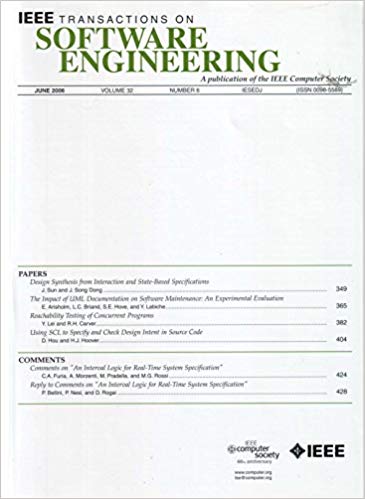LLMorpheus: Mutation Testing Using Large Language Models
IF 5.6
1区 计算机科学
Q1 COMPUTER SCIENCE, SOFTWARE ENGINEERING
引用次数: 0
Abstract
In mutation testing, the quality of a test suite is evaluated by introducing faults into a program and determining whether the program’s tests detect them. Most existing approaches for mutation testing involve the application of a fixed set of mutation operators, e.g., replacing a “+” with a “-”, or removing a function’s body. However, certain types of real-world bugs cannot easily be simulated by such approaches, limiting their effectiveness. This paper presents a technique for mutation testing where placeholders are introduced at designated locations in a program’s source code and where a Large Language Model (LLM) is prompted to ask what they could be replaced with. The technique is implemented inLLMorpheus:使用大型语言模型的突变测试
在突变测试中,通过将错误引入程序并确定程序的测试是否检测到它们来评估测试套件的质量。大多数现有的突变检测方法涉及应用一组固定的突变操作符,例如,用“-”替换“+”,或删除函数体。然而,某些类型的真实世界的bug无法通过这种方法轻松模拟,从而限制了它们的有效性。本文介绍了一种突变测试技术,其中在程序源代码的指定位置引入占位符,并提示大型语言模型(LLM)询问可以用什么代替它们。该技术是在LLMorpheus (JavaScript的突变测试工具)中实现的,并在13个主题包上进行了评估,考虑了提示策略的几种变体,并使用了几个llm。我们发现LLMorpheus能够产生类似现有bug的突变,而StrykerJS(一种最先进的突变测试工具)无法产生这种突变。此外,我们报告了LLMorpheus产生的运行时间、成本和突变体数量,证明了它的实用性。
本文章由计算机程序翻译,如有差异,请以英文原文为准。
求助全文
约1分钟内获得全文
求助全文
来源期刊

IEEE Transactions on Software Engineering
工程技术-工程:电子与电气
CiteScore
9.70
自引率
10.80%
发文量
724
审稿时长
6 months
期刊介绍:
IEEE Transactions on Software Engineering seeks contributions comprising well-defined theoretical results and empirical studies with potential impacts on software construction, analysis, or management. The scope of this Transactions extends from fundamental mechanisms to the development of principles and their application in specific environments. Specific topic areas include:
a) Development and maintenance methods and models: Techniques and principles for specifying, designing, and implementing software systems, encompassing notations and process models.
b) Assessment methods: Software tests, validation, reliability models, test and diagnosis procedures, software redundancy, design for error control, and measurements and evaluation of process and product aspects.
c) Software project management: Productivity factors, cost models, schedule and organizational issues, and standards.
d) Tools and environments: Specific tools, integrated tool environments, associated architectures, databases, and parallel and distributed processing issues.
e) System issues: Hardware-software trade-offs.
f) State-of-the-art surveys: Syntheses and comprehensive reviews of the historical development within specific areas of interest.
 求助内容:
求助内容: 应助结果提醒方式:
应助结果提醒方式:


